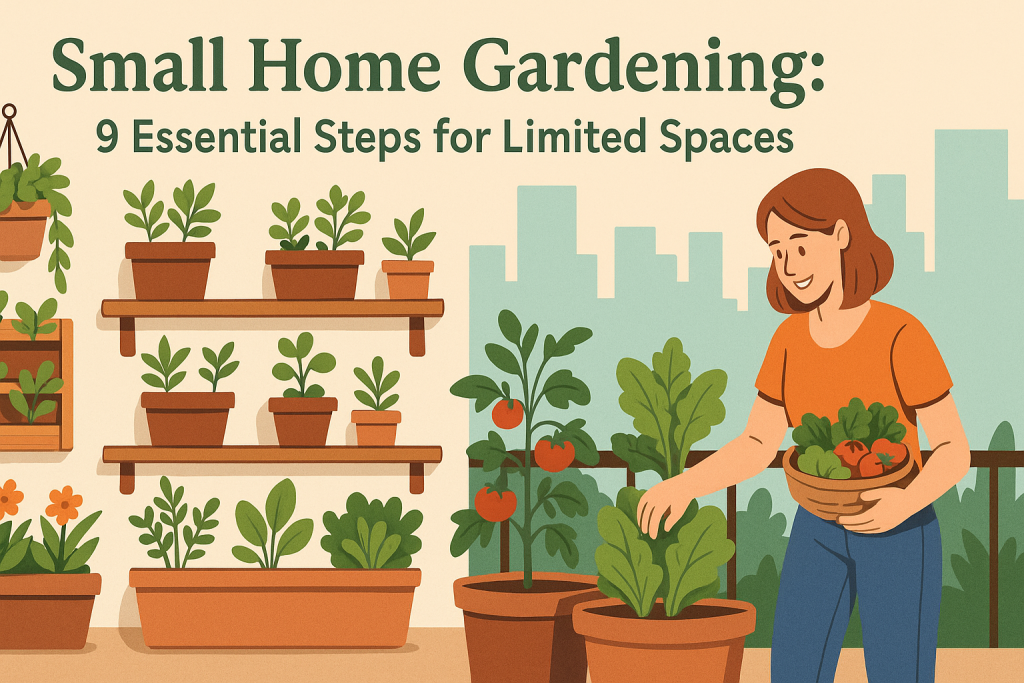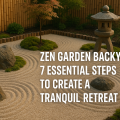Why Gardening in Small Spaces is Easier Than You Think
Many people believe that you need a large backyard to start a productive garden, but the truth is that small home gardening has never been more accessible. Urban dwellers, apartment owners, or those with limited outdoor areas can cultivate fresh vegetables, herbs, and flowers with the right strategies. With rising interest in sustainability and homegrown food, starting a garden in a small space can bring multiple benefits, including improved air quality, fresh produce, and a calming environment right at your doorstep.
Gardening in limited spaces is all about making the most of your available area. Whether you have a sunny window, a balcony, or a tiny patio, effective planning and a few creative solutions can transform even the smallest space into a lush, productive oasis. Let’s explore nine essential steps to get your small home garden growing successfully.
1. Assess Your Space and Light Conditions
The first step in starting a small home garden is to evaluate your available space. Identify areas that receive adequate sunlight, such as windowsills, balconies, patios, or even walls for vertical gardening. Most edible plants and flowers require at least 4-6 hours of sunlight daily. Notice where the sun hits during different times of the day to determine the best locations for your plants.
If your space lacks natural light, don’t worry—many plants thrive with indirect sunlight or can be grown indoors with the help of grow lights. Choosing the right spot is crucial, as it will dictate what kind of plants you can successfully cultivate and how you arrange them.
Tips for Maximizing Space
- Use shelves or ladders for vertical gardening.
- Hang pots from railings or ceilings to free up floor space.
- Choose compact or trailing varieties suited for containers.
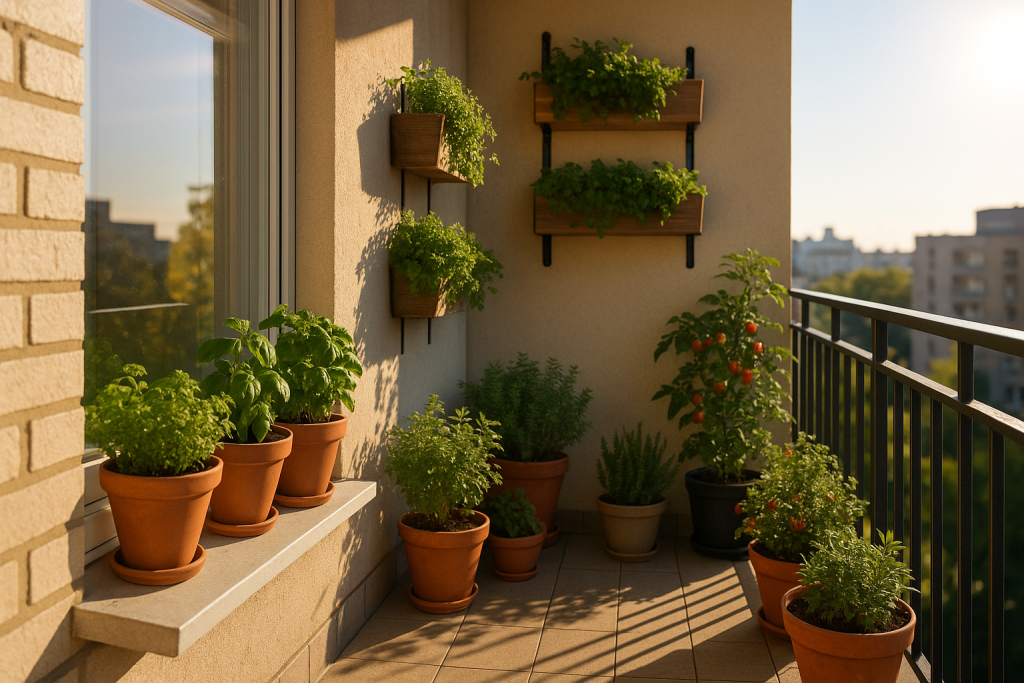
2. Choose the Right Containers
Container gardening is the cornerstone of small space horticulture. Nearly any vessel with drainage holes can serve as a planter—think pots, buckets, recycled containers, or even old drawers. When selecting containers, consider their size, material, and drainage capabilities. Deeper pots are best for root vegetables, while shallow containers suffice for herbs and leaf greens.
Using lightweight and stackable containers allows for flexibility and easy rearrangement. Self-watering pots can also help busy gardeners maintain consistent moisture levels, reducing the risk of plant stress.
Container Garden Essentials
- Ensure all containers have proper drainage to prevent root rot.
- Group plants with similar water and sunlight needs together.
- Opt for food-safe materials if you plan to grow edible crops.
3. Select Plants That Thrive in Small Spaces
Not all plants are well-suited for small or indoor gardens. For the best results, focus on compact, fast-growing varieties that maximize yield in minimal space. Leafy greens like lettuce, kale, and spinach are perfect for containers and regrow quickly after harvesting. Culinary herbs—basil, mint, rosemary, and parsley—are another excellent choice. For flowers, look for dwarf or trailing species.
Many seed companies label varieties as “patio,” “compact,” or “dwarf,” making it easier to select plants that won’t outgrow your space. You may also consider climbers like peas or beans, which utilize vertical support to save square footage.
Best Plants for Small Home Gardens
- Lettuce, spinach, and arugula
- Radishes and baby carrots
- Cherry tomatoes and dwarf peppers
- Herbs: basil, cilantro, thyme, parsley
- Strawberries and microgreens
- Ornamental flowers: marigold, petunia, pansy
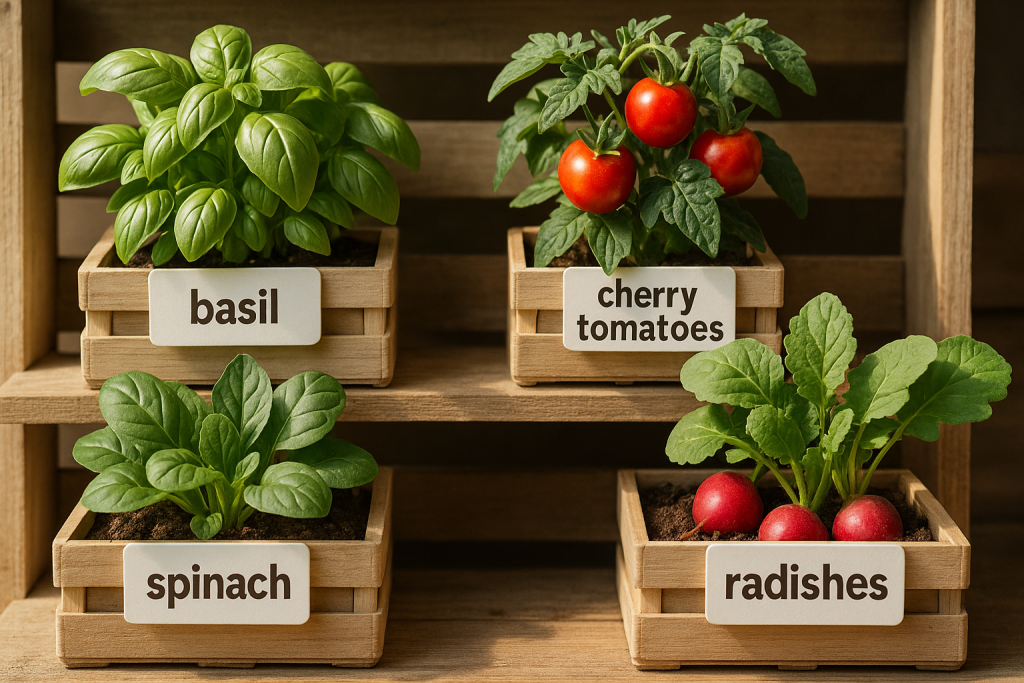
4. Use Vertical and Hanging Solutions
When horizontal space is limited, think vertically. Vertical gardening techniques increase your planting area by utilizing walls, fences, trellises, or hanging supports. Wall-mounted planters, pocket gardens, and stacking pots are just a few of the ways to grow more without taking up extra floor space.
This approach is especially effective for vining plants like tomatoes, peas, and beans, as well as herbs, succulents, and cascading flowers. Not only does vertical gardening maximize your yield, but it also adds a beautiful green accent to any space.
Creative Vertical Gardening Ideas
- Install a vertical pallet garden against a wall or fence.
- Use hanging baskets for strawberries and trailing herbs.
- Repurpose shoe organizers as wall-mounted herb gardens.
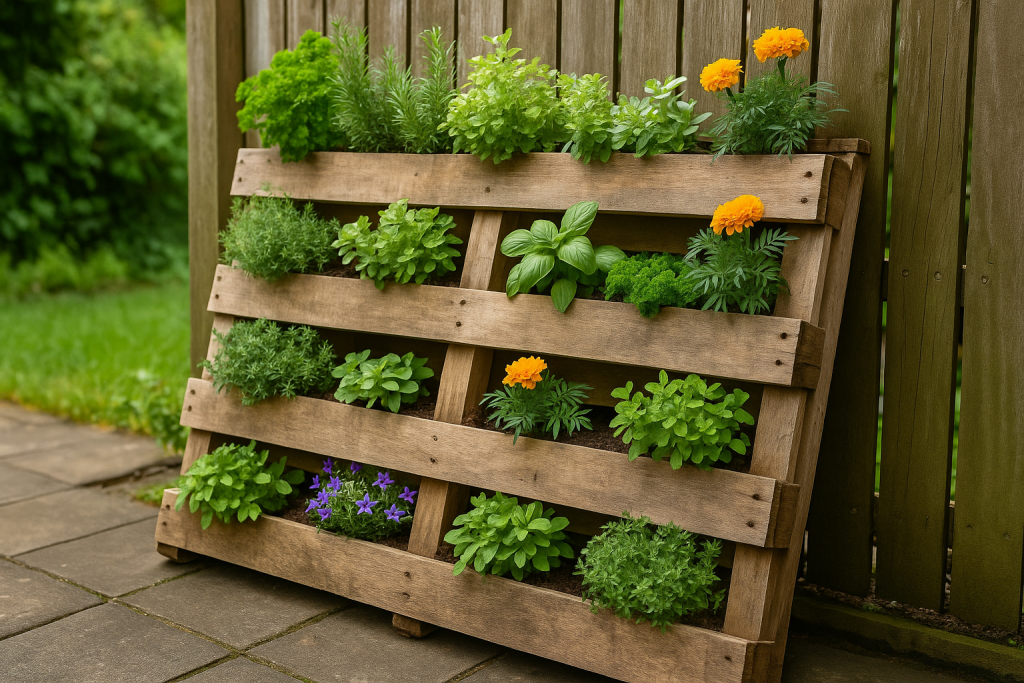
5. Select High-Quality Soil and Fertilizer
Soil quality is a decisive factor for success in small space gardening. Opt for a premium potting mix blended with compost to ensure good drainage and ample nutrients. Unlike garden beds, containers deplete nutrients faster, so consider adding slow-release organic fertilizers or supplementing with liquid feeds during the growing season.
Regularly check for signs of overwatering or poor drainage, such as yellowing leaves or mold on the soil surface. Mulching the top layer of soil can help retain moisture and suppress weeds, even in containers.
Soil Tips for Thriving Plants
- Mix in compost or worm castings for organic nutrients.
- Choose soil blends specifically labeled for container use.
- Refresh soil annually and rotate crops to prevent disease buildup.
6. Plan a Smart Watering Routine
Small gardens often need more frequent watering since containers dry out faster than ground beds. The key is to maintain consistent moisture—neither too soggy nor too dry. Check soil moisture daily, especially during hot weather or if your plants are exposed to wind or direct sun.
Investing in a watering can with a narrow spout or drip irrigation system helps target the roots and reduce waste. Early morning is the ideal time to water, as it allows leaves to dry quickly, minimizing disease risk.
Efficient Watering Strategies
- Group thirstier plants together for easier irrigation.
- Use saucers to catch excess water but empty them regularly.
- Consider self-watering containers for consistent hydration.
7. Start With Seeds or Seedlings
Depending on your gardening goals and patience, you can begin with seeds or young seedlings. Growing from seed is more economical and offers a wider choice of plant varieties, but requires extra time and attention. Seedlings, available at local nurseries or garden centers, give you a head start and are ideal for beginners.
When sowing seeds, follow the depth and spacing instructions on packets. For transplants, handle roots gently and avoid disturbing the soil around them. Label your pots to keep track of different varieties, especially if you’re growing multiple crops.
Seed Starting Tips
- Use seed trays or recycled egg cartons for sprouting indoors.
- Thin out crowded seedlings to give each plant enough room.
- Harden off seedlings by gradually exposing them to outdoor conditions before transplanting.
8. Practice Integrated Pest Management
Pests can be a challenge in any garden, but small spaces make it easier to monitor and manage them. Integrated pest management (IPM) involves using a mix of cultural, physical, and biological controls to keep pests at bay without harsh chemicals. Regularly inspect your plants for signs of pests or disease, such as chewed leaves, webbing, or discoloration.
Encourage beneficial insects like ladybugs, use neem oil or insecticidal soap, and remove problem plants if infestations occur. Cleanliness is also crucial—remove dead leaves and debris to reduce hiding spots for pests.
Natural Pest Control Methods
- Hand-pick visible pests and squish or relocate them.
- Deploy yellow sticky traps for flying insects.
- Spray a diluted soap solution to deter aphids and mites.
9. Enjoy, Harvest, and Expand Your Garden
One of the greatest rewards of small home gardening is harvesting your first crop. Pick vegetables and herbs as they mature to encourage continuous growth—many leafy greens and herbs will regrow after cutting. Enjoy fresh, homegrown flavors in your meals and share the bounty with family and friends.
As your confidence grows, experiment with new plant varieties, expand to different containers, or try more advanced techniques like hydroponics or companion planting. Remember, gardening is a journey—learn through trial and error, and celebrate each success no matter how small.
Bonus: Small Gardening Success Stories
- Urban Balcony Triumph: Jane from New York grows tomatoes, herbs, and lettuce on her 4×6-foot balcony, harvesting fresh salads all summer long.
- Kitchen Counter Herbs: Sam started with basil and mint in recycled jars—now he enjoys fresh herbs year-round on his apartment window ledge.
- Tiny Patio Oasis: Maria transformed a concrete patio into a vibrant flower haven with vertical planters and colorful pots.
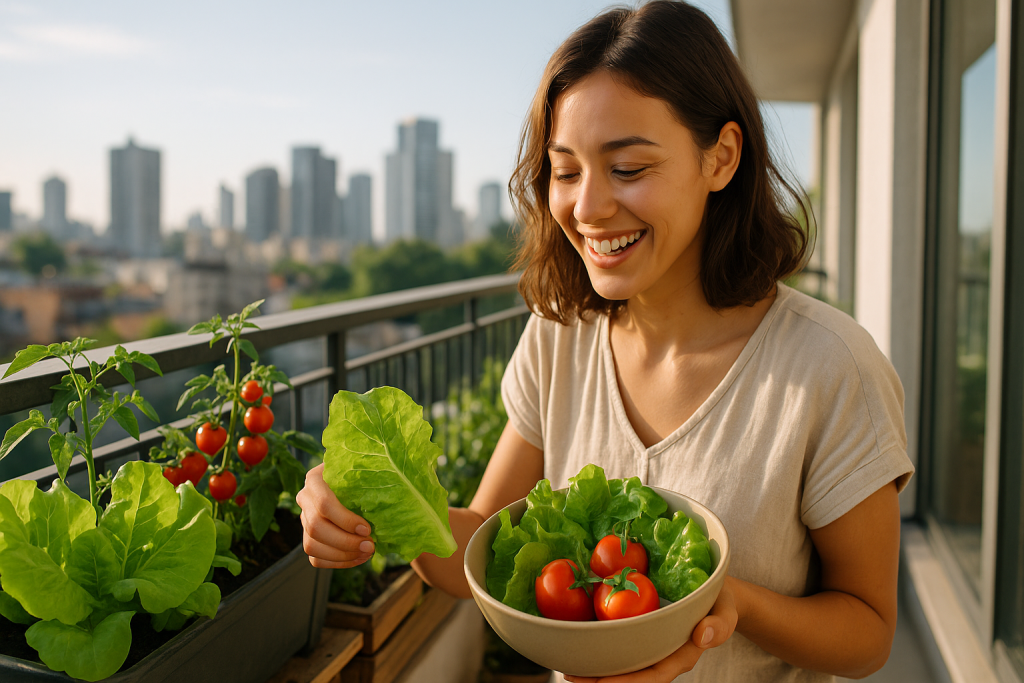
Conclusion: Transform Any Space into a Lush Garden
With thoughtful planning and a bit of creativity, starting a small home garden in limited spaces is not only possible—it’s incredibly rewarding. By following these nine essential steps, even beginners can cultivate a thriving mini-garden, savoring the joy of homegrown produce and flowers regardless of space constraints. So gather your supplies, pick your favorite plants, and begin your gardening adventure today!
